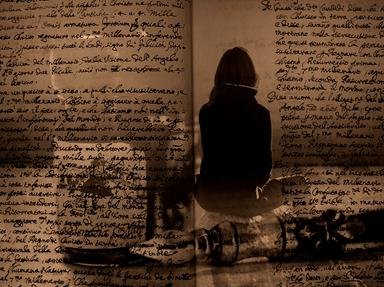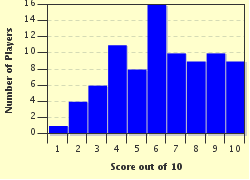Quiz Answer Key and Fun Facts
1. What reclusive Massachusetts poet studied botany at Amherst Academy and other sciences at Mount Holyoke College in the 1840s and, in addition to writing at least 1,789 poems, compiled an herbarium of flowers and plants?
2. What poet praised the beauty of daffodils growing in the springtime near his home, Dove Cottage, in the English Lake District?
3. What 20th century confessional poet, whose "Daddy" had an avocation as a beekeeper, wrote a series of poems about bees, taking the female imagery of the hive through the seasons of the year?
4. Seventeenth century poet Robert Herrick may be remembered best for his "carpe diem" poem "To the Virgins to Make Much of Time" (beginning with the line "Gather ye rosebuds while ye may"). Is it true or false that Herrick seized the day by marrying twice and having many romantic affairs before dying in his early thirties?
5. Mary Oliver writes about a grasshopper eating sugar from her hand in "The Summer Day" and ends the poem with a question: "Tell me, what is it you plan to do / with your one wild and precious life?" What prestigious American literary award was awarded to her in 1984?
6. During which war did Canadian medical doctor and military officer John McCrae write about poppies blowing over the graves of the fallen "In Flanders Fields"?
7. She was kidnapped as a child, crossing the stormy Atlantic Ocean. She had to learn a new language but went on to write many poems and letters, even corresponding with General George Washington, who acknowledged a poem she wrote in his praise. Who was this early American poet, who also wrote a poem about a hurricane in the late 1700s?
8. A 20th century poet who wrote about this harvest painting is more well-known for a poem about a red wheelbarrow and white chickens. Who was this New Jersey medical doctor who conveyed vivid images using a few well-chosen words?
9. His poem "Spring and Fall" addresses a young girl named Margaret, who is "grieving / Over Goldengrove unleaving". What 19th Century Jesuit priest wrote poems with created words, unexpected imagery, and "sprung rhythm" that challenged conventions and read like modern poetry?
10. He began his poem "The Journey of the Magi" with an evocation of winter: "A cold coming we had of it / Just the worst time of the year...." Born in St. Louis, Missouri, what major poet of the Modernist movement journeyed to England as a young man in 1914, later became a British subject and a devout Anglo-Catholic, and received the Nobel Prize for Literature in 1948?
Source: Author
nannywoo
This quiz was reviewed by FunTrivia editor
bloomsby before going online.
Any errors found in FunTrivia content are routinely corrected through our feedback system.

